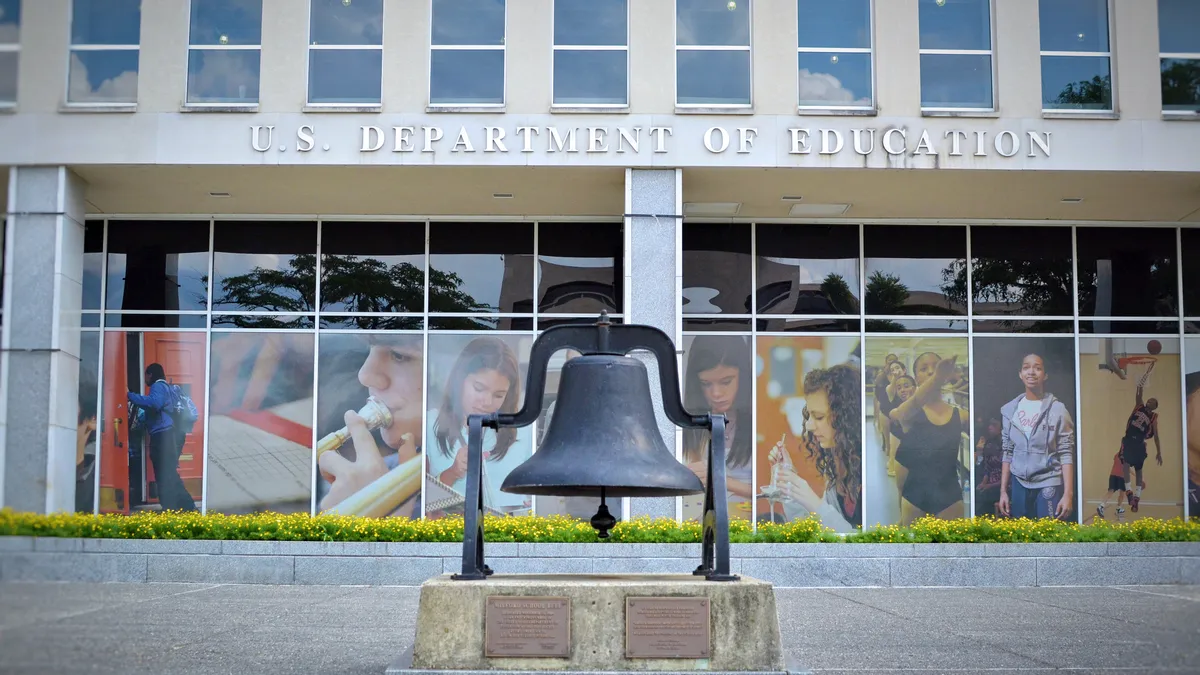Dive Brief:
- Although racial and ethnic diversity has improved among college faculty, it still lags that of students, according to data from the National Center for Education Statistics analyzed by the Pew Research Center.
- The share of nonwhite undergraduate students rose to 45% from 28% in the two decades ending the fall of 2017. But growth in nonwhite, full-time faculty has been slower, with their share rising to 24% from 14% during that period.
- There is more diversity among nontenured professors than tenured professors, Pew noted. About 27% of assistant professors were nonwhite in 2017, compared to 19% of fully tenured professors.
Dive Insight:
Although many colleges have vowed to increase faculty diversity, little progress has been made in recent years.
About 76% of faculty members in the U.S. were white in the fall of 2017, compared to 55% of undergraduate students.
Hispanic students accounted for a large share of the increase in student diversity, doubling to 20% of undergraduates in 2017 from 9% in 1997. However, the share of Hispanic faculty grew only slightly during the period, to 5% from 3%. And while 14% of undergraduates were black in the fall of 2017, the share of black faculty was stagnant, inching up to from 5% to 6% over the prior two decades.
A 2016 report from the TIAA Institute found many recent improvements in faculty diversity have been in nontenured positions, a trend exacerbated by a decline in tenured jobs.
"[J]ust as the doors of academe have been opened more widely than heretofore to marginalized groups, the opportunity structure for academic careers has been turned on its head," the report's authors wrote. "The available jobs tend, less and less, to be the conventional 'good' jobs, that is, the tenure-track career ladder jobs."
At bachelor's institutions, just 5.2% of tenured faculty members are black and 6.6% are Hispanic or Latino, according to research recently published in the Hispanic Journal of Law and Policy. Those shares shrink to 4% and 4.6%, respectively, at doctoral institutions.
Such trends have negative implications for faculty members and students.
For example, performance gaps across grades and pass and dropout rates between white and underrepresented minority students shrink by 20% to 50% when they are taught by an underrepresented minority instructor, according to a working paper examining community college students from the fall of 2002 to the spring of 2007.
On the other hand, underrepresented faculty members often spend more time on diversity and inclusion efforts and mentoring minority students — work that often isn't rewarded with tenure.
Some colleges are crafting hiring and promotion policies that recognize such efforts.
This year, for example, Ohio's Kenyon College rolled out guidelines to acknowledge professors' diversity and inclusion work during promotion and tenure decisions. That followed the University of California, Los Angeles' move last year to start asking applicants about their past and planned contributions to equity and diversity.










